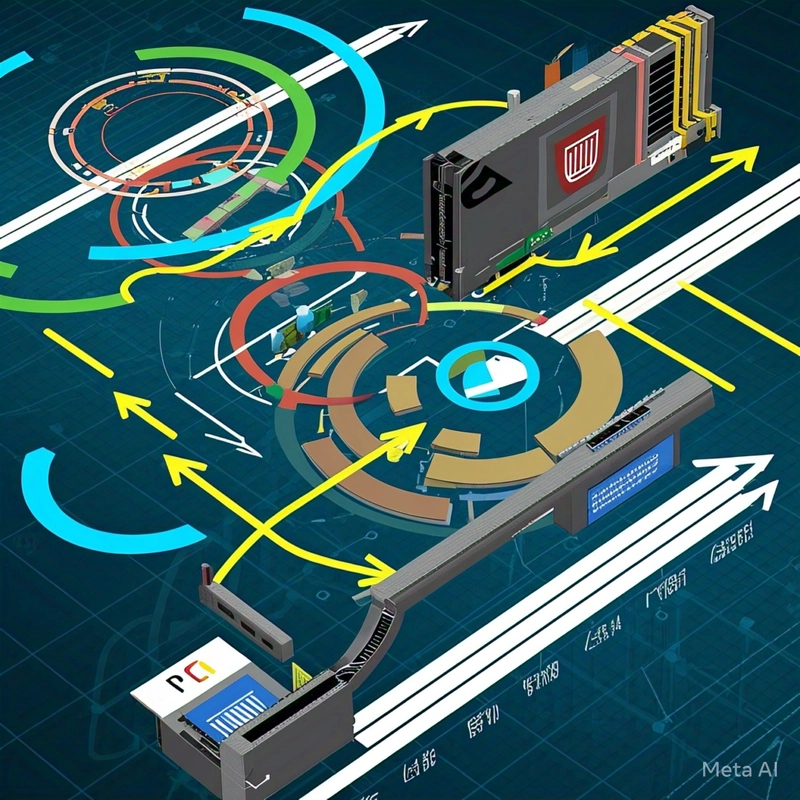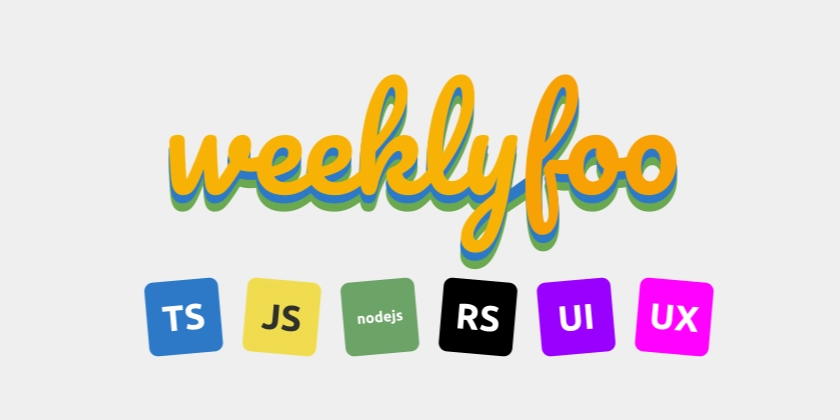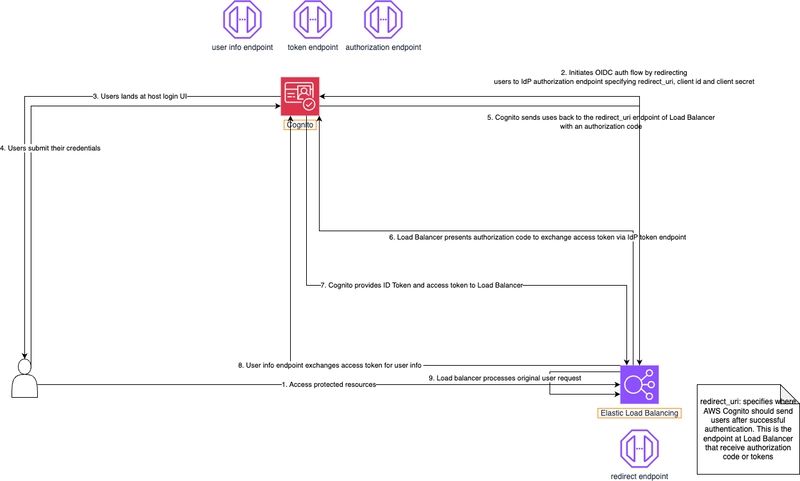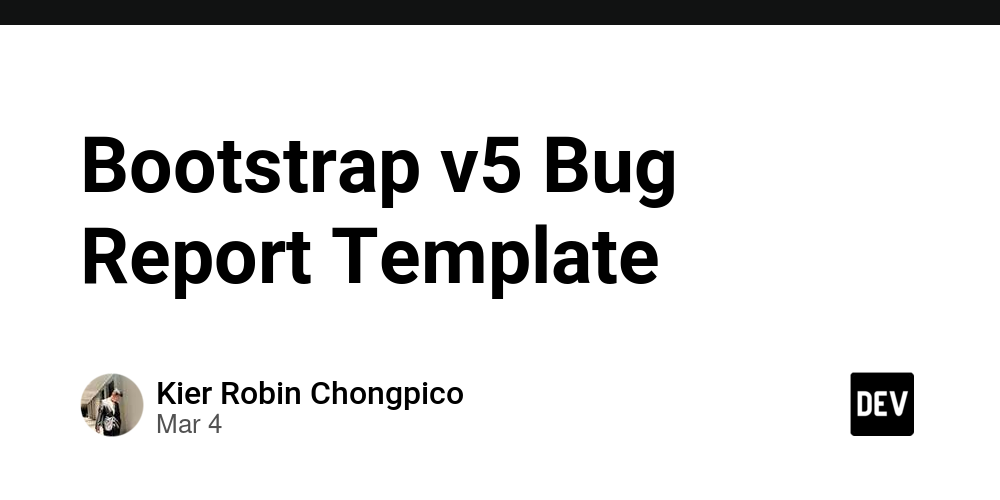100 DevOps Interview Questions and Answers for 2025
Whether you are a novice or an experienced professional, this thorough, current compilation of DevOps interview questions and in-depth answers for 2025 will help you to succeed. Introduction DevOps remains at the core of contemporary software engineering as we go deeper into 2025. Today, companies want more than simply programmers able to write code; they want engineers able to automate, scale, and secure whole infrastructure stacks usually spanning several clouds and systems. This article is for you whether you are a junior engineer investigating your first CI/CD pipeline, a midlevel developer moving into site reliability, or a seasoned DevOps expert wanting to advance for a senior platform position. This article categorizes more than 100 actual interview questions and answers to reflect present DevOps trends and hiring criteria. These questions are not only theoretical; they reflect the kinds of issues you will address in interviews and on the job. From GitOps and Kubernetes to security, observability, and platform engineering, this book aims to assist you clarify not only what you do but also why you do it a fundamental tool for opening interviews in 2025. Basics of DevOps Any interview starts with knowledge of fundamental DevOps ideas. Often, warm up questions will challenge your understanding of definitions, lifecycle models, and the philosophical change DevOps stands for. 1. What is DevOps? DevOps is a set of practices that unify software development (Dev) and IT operations (Ops). The goal is to automate and integrate processes so software can be built, tested, and released faster and more reliably. 2. What are the major aims of DevOps? Shorter development cycles Increased deployment frequency Faster time to recovery Improved collaboration between teams Continuous integration and delivery 3. Describe the DevOps lifecycle. The DevOps lifecycle is commonly depicted as an unending loop consisting of the following stages: Plan: Define features and fixes Develop: Write and commit code Build: Compile, package, and prepare for testing Test: Run automated unit/integration tests Release: Approve builds for production Deploy: Push to production environments Operate: Monitor and administer applications Examine: For input, look at user behavior, statistics, and log analysis. 4. In what ways does DevOps differ from Agile? Agile emphasizes customer input and incremental development. By automating deployment and infrastructure, DevOps pushes Agile further. Agile reduces the dev cycle; DevOps lengthens it to cover operations and delivery. 5. The main ideas of DevOps are? First, automation Fail quickly and recover more quickly. All as Code Ongoing feedback cycles Cooperation across several departments Tools for DevOps (2025 Version) In 2025, DevOps tooling continues to improve rapidly. Companies reward engineers who not only know the tools, but understand when, when, and how to utilize them efficiently in real world systems. Here are the primary categories and tools you’re expected to know followed by commonly asked questions in each subject. Version Control 6. Git is what? Its significance? A distributed version control system, Git tracks code changes. In DevOps, it also controls infrastructure, policies, and pipeline definitions thereby laying the basis for the “Everything as Code” concept. 7. Git vs. GitHub: what’s the distinction? The real version control tool local or remote is Git. A hosted platform for team administration, review processes, GitHub Actions, and collaboration. 8. List some Git branching techniques. Git Flow: Appropriate for big teams with consistent releases GitHub Flow: Used with continuous delivery, simpler Trunk based development: Ideal for high frequency deployments CI/CD and Automation 9. CI/CD in DevOps is what? Automatically tests and merges new code, CI (Continuous Integration) CD (Continuous Delivery/Deployment): Automatically prepares and releases code to production or staging 10. List a few well known CI/CD tools. Jenkins GitHub Action GitLab Continuous Integration/Continuous Delivery Circle CI Pipelines in Azure DevOps 11. Pipelineascode is? Defining your whole CI/CD pipeline in code for instance, YAML for GitHub Actions. Your build/test/deploy processes gain version control, cooperation, and repeatability from this method. Orchestration and Containerization 12. What is Docker? Docker is a tool for creating portable containers that packages applications and their dependencies. Docker guarantees uniformity across settings by letting you pack apps and their dependencies into a portable container. 13. Docker vs. Podman what’s the difference? Docker: Uses a background daemon Podman: Daemonless, rootless by default, and more secure for some use cases 14. What is Kubernetes? Kubernetes (K8s) is an open source system for orchestrating containers handling deployment, scaling, upgrades, and networking of containerized applicat

Whether you are a novice or an experienced professional, this thorough, current compilation of DevOps interview questions and in-depth answers for 2025 will help you to succeed.
Introduction
DevOps remains at the core of contemporary software engineering as we go deeper into 2025. Today, companies want more than simply programmers able to write code; they want engineers able to automate, scale, and secure whole infrastructure stacks usually spanning several clouds and systems.
This article is for you whether you are a junior engineer investigating your first CI/CD pipeline, a midlevel developer moving into site reliability, or a seasoned DevOps expert wanting to advance for a senior platform position.
This article categorizes more than 100 actual interview questions and answers to reflect present DevOps trends and hiring criteria. These questions are not only theoretical; they reflect the kinds of issues you will address in interviews and on the job.
From GitOps and Kubernetes to security, observability, and platform engineering, this book aims to assist you clarify not only what you do but also why you do it a fundamental tool for opening interviews in 2025.
Basics of DevOps
Any interview starts with knowledge of fundamental DevOps ideas. Often, warm up questions will challenge your understanding of definitions, lifecycle models, and the philosophical change DevOps stands for.
1. What is DevOps?
DevOps is a set of practices that unify software development (Dev) and IT operations (Ops). The goal is to automate and integrate processes so software can be built, tested, and released faster and more reliably.
2. What are the major aims of DevOps?
- Shorter development cycles
- Increased deployment frequency
- Faster time to recovery
- Improved collaboration between teams
- Continuous integration and delivery
3. Describe the DevOps lifecycle.
The DevOps lifecycle is commonly depicted as an unending loop consisting of the following stages:
- Plan: Define features and fixes
- Develop: Write and commit code
- Build: Compile, package, and prepare for testing
- Test: Run automated unit/integration tests
- Release: Approve builds for production
- Deploy: Push to production environments
- Operate: Monitor and administer applications
- Examine: For input, look at user behavior, statistics, and log analysis.
4. In what ways does DevOps differ from Agile?
Agile emphasizes customer input and incremental development. By automating deployment and infrastructure, DevOps pushes Agile further. Agile reduces the dev cycle; DevOps lengthens it to cover operations and delivery.
5. The main ideas of DevOps are?
- First, automation
- Fail quickly and recover more quickly.
- All as Code
- Ongoing feedback cycles
- Cooperation across several departments
Tools for DevOps (2025 Version)
In 2025, DevOps tooling continues to improve rapidly. Companies reward engineers who not only know the tools, but understand when, when, and how to utilize them efficiently in real world systems.
Here are the primary categories and tools you’re expected to know followed by commonly asked questions in each subject.
Version Control
6. Git is what? Its significance?
A distributed version control system, Git tracks code changes. In DevOps, it also controls infrastructure, policies, and pipeline definitions thereby laying the basis for the “Everything as Code” concept.
7. Git vs. GitHub: what’s the distinction?
- The real version control tool local or remote is Git.
- A hosted platform for team administration, review processes, GitHub Actions, and collaboration.
8. List some Git branching techniques.
- Git Flow: Appropriate for big teams with consistent releases
- GitHub Flow: Used with continuous delivery, simpler
- Trunk based development: Ideal for high frequency deployments
CI/CD and Automation
9. CI/CD in DevOps is what?
- Automatically tests and merges new code, CI (Continuous Integration)
- CD (Continuous Delivery/Deployment): Automatically prepares and releases code to production or staging
10. List a few well known CI/CD tools.
- Jenkins
- GitHub Action
- GitLab Continuous Integration/Continuous Delivery
- Circle CI
- Pipelines in Azure DevOps
11. Pipelineascode is?
Defining your whole CI/CD pipeline in code for instance, YAML for GitHub Actions. Your build/test/deploy processes gain version control, cooperation, and repeatability from this method.
Orchestration and Containerization
12. What is Docker?
Docker is a tool for creating portable containers that packages applications and their dependencies.
Docker guarantees uniformity across settings by letting you pack apps and their dependencies into a portable container.
13. Docker vs. Podman what’s the difference?
Docker: Uses a background daemon
Podman: Daemonless, rootless by default, and more secure for some use cases
14. What is Kubernetes?
Kubernetes (K8s) is an open source system for orchestrating containers handling deployment, scaling, upgrades, and networking of containerized applications.
15. Any other orchestration tools?
Red Hat’s Kubernetes system, OpenShift
Nomad: Less known but gaining popularity from HashiCorp lightweight orchestration
Observation and Monitoring
16. Observability in DevOps is?
Key for debugging and root cause analysis, the capacity to grasp a system’s internal state depending on logs, metrics, and traces.
17. Tools to know:
- Prometheus: Metrics collection
- Grafana: Dashboards
- ELK/EFK stack: Log aggregation
- Datadog: SaaS for full stack monitoring
Infrastructure as Code and Configuration
18. How do Ansible and Terraform differ?
- Terraform: Declarative IaC great for provisioning infrastructure
- Ansible: Procedural better suited for configuration management and changes
19. Other tools you may be asked about:
- Chef and Puppet (legacy in some enterprises)
- Pulumi (modern IaC with TypeScript/Python support)
DevOps System Design and Architecture
Architectural queries are being included in an increasing number of DevOps interviews. You’ll be expected to develop dependable, scalable systems typically under limitations like heavy traffic, blue/green rollout needs, or rapid rollback.
20. How would you create a scalable CI/CD pipeline?
- Employ self hosted runners or autoscaling agents
- Cache dependencies to accelerate builds
- Separate workflows for dev, staging, and prod
- Include monitoring gates and approvals prior to production.
21. BlueGreen Deployment is?
BlueGreen Deployment uses two matching environments. Traffic is moved from blue to green after the new version is deployed to the green environment and tested. Should anything fail, rollback is immediate.
22. What is a Canary Deployment?
Canary deployments release modifications to a small subset of users. If metrics appear healthy, the release is gradually expanded.
23. How do microservices affect DevOps?
- Demand decentralized pipelines
- More sophisticated observability (traces, service specific metrics)
- Growing demand for service contracts and automated tests
- Encourage traffic routing via service meshes e.g., Istio.
24. What exactly is unchangeable infrastructure?
You replace running systems with new instances e.g., AMIs, Docker images rather than patching them. Tools like Terraform and Packer support this model. It reduces configuration drift and improves reliability.
Cloud & DevOps Integration
Cloud computing is deeply embedded in modern DevOps. In 2025, most organizations operate in hybrid or multicloud environments, and engineers are expected to manage infrastructure, deployments, and monitoring using cloud native tools.
Cloud Fundamentals
25. What role does cloud play in DevOps?
Cloud providers offer on demand infrastructure, managed services, autoscaling, and CI/CD integrations all essential for building fast, reliable DevOps pipelines.
26. What’s the difference between IaaS, PaaS, and SaaS?
- IaaS (Infrastructure as a Service): Compute, storage, and networking (e.g., AWS EC2)
- PaaS (Platform as a Service): Preconfigured runtimes for apps (e.g., Heroku)
- SaaS (Software as a Service): Fully managed applications (e.g., GitHub, Datadog)
27. Explain the difference between public, private, and hybrid cloud.
- Public cloud: Hosted and managed by providers (AWS, GCP)
- Private cloud: Dedicated infrastructure, often on prem
- Hybrid: Mix of both typically used to retain control over sensitive workloads
Cloud DevOps Tooling
28. Which AWS services are common in DevOps?
- EC2: Compute
- S3: Artifact and log storage
- EKS: Kubernetes
- CI/CD: CodePipeline/CodeBuild
- IAM: Access control
- CloudWatch: Monitoring
29. Azure equivalents?
- Azure Pipelines = Jenkins
- AKS = EKS
- Azure Monitor = CloudWatch
- Azure DevOps = GitHub + CI/CD suite
- Azure Repos = Git repos
30. How does Google Cloud approach DevOps?
- Cloud Build for CI
- GKE for Kubernetes
- Cloud Deploy for rollout strategies
- Operations Suite (formerly Stackdriver) for logging and tracing
IaC and Serverless in the Cloud
31. How does Terraform enable multicloud DevOps?
Terraform supports multiple cloud providers via plugins, allowing you to manage resources from AWS, Azure, and GCP using a single language and codebase.
32. CloudFormation vs Terraform?
CloudFormation is AWS native; Terraform is cloud agnostic and offers a stronger ecosystem, better modularity, and an easier syntax for multicloud use.
33. What is Pulumi?
Pulumi lets you write IaC using real programming languages like TypeScript or Python. It appeals to developers who prefer conventional coding over domain specific languages like Terraform’s HCL.
34. What is serverless computing?
Serverless allows you to run code without managing servers. Platforms like AWS Lambda or Google Cloud Functions handle provisioning, scaling, and infrastructure making them ideal for event driven tasks.
Security and Cost Management
35. How do you protect cloud based DevOps systems?
- Use least privilege IAM roles
- Encrypt data at rest and in transit
- Regularly alternate secrets
- Use technologies like AWS CloudTrail to track access and audit records.
36. How do you manage secrets across clouds?
- AWS Secrets Manager
- Azure Key Vault
- GCP Secret Manager
- HashiCorp Vault for multicloud configurations
37. How do DevOps teams optimize cloud costs?
- Schedule unused resources for shutdown
- Implement spot instances and autoscaling
- Track spending using resources such AWS Cost Explorer
- Automate dev/test environment cleanup
Automation and CI/CD
CI/CD is the backbone of modern DevOps, enabling fast feedback, automation, and delivery. Interviewers often test your pipeline design, error handling, and real world implementation skills.
Ideas in CI/CD
38. How do CI, CD (Delivery), and CD (Deployment) differ?
- CI: Code is automatically tested and merged
- Continuous Delivery: Manual trigger, code is ready to deploy at any time
- Continuous Deployment: After passing all tests, completely automated delivery to production
39. What makes CI/CD significant?
- Lowers human mistake
- Accelerates delivery
- Increases code quality by means of automated testing
- Allows teams to focus on innovation
40. What are essential phases in a CI/CD pipeline?
- Checkout from Git
- Build or compile
- Test (unit, integration, E2E)
- Storage of artifacts
- Install to production/staging
- Track outcomes and rollbacks
Tools and Strategies for CI/CD
41. List instruments for CI/CD.
- Actions on GitHub
- GitLab Continuous Integration
- Jenkins
- Circle CI
- Pipelines in Azure
42. A build artifact is?
A build stage produces a deployable output called an artifact; examples include Docker images, JAR files, and compiled binaries.
43. What is pipeline as code?
Defining build and deployment processes in code e.g., YAML files for version control, reusability, and cooperation.
44. What do you do about pipeline failures?
- Review records
- Try again with cache turned off
- Tell the appropriate team
- Run local failed tests to reproduce the problem
- Make sure flaky tests are monitored and corrected.
45. What are pipeline templates?
Reusable definitions for typical procedures helpful in large organizations for standardizing quality gates and approval flows.
Testing and Deployment
46. What types of tests should run in a pipeline?
- Unit tests
- Tests of integration
- End-to-end tests
- Smoke test
- Tests of regression
47. What is bluegreen deployment?
A release technique allowing zero downtime deployment and instant rollback by routing traffic between two identical environments.
48. What is canary deployment?
Releases new updates to a small sample of users first. Should it be stable, the rollout grows. This lowers risk and shrinks the explosion radius of flaws.
49. What is a feature flag?
Toggle features on or off in production without code modifications. Excellent for rollback without deployment, progressive rollouts, and A/B testing.
50. What stops unintentional production deployments?
- Make use of safeguarded branches
- Ask for authorizations
- Establish manual triggers
- Use freezes or “change windows”
- Every deploy should be logged and audited.
7. Kubernetes and containerization
Cloud native infrastructure is mostly made up of containers and orchestration tools including Kubernetes. Questions about container design, networking, scaling, and troubleshooting will be directed at you.
Basic Docker
51. What is a container?
Isolated from the host and other containers, a lightweight, portable device runs applications with all dependencies.
52. Container or Docker image?
Image: Read only blueprint
Container: Operating copy of that blueprint
53. A Dockerfile is what?
A text file containing commands to create a Docker image e.g., FROM, COPY, RUN, CMD
54. How can I make my Docker image smaller?
- Start with Alpine
- Combine
RUNcommands - Clear caches
-
.dockerignoreexcludes files - Builds with several stages
Fundamentals of Kubernetes
55. Kubernetes is a tool for managing containerized applications.
An open source container orchestration system for controlling deployment, scalability, and management of containerized applications.
56. Main elements of Kubernetes?
- API Server: Access point
- etcd: Maintains cluster state
- kubelet: Communicates with the node
- Controller Manager: Loops of Reconciliation
- Scheduler: Allocates pods to nodes
57. A Pod is a unit of measurement.
The smallest deployable unit in Kubernetes, a pod may have one or more closely related containers.
58. Kubernetes: What is a Service?
Even if the underlying Pods die and restart, a stable endpoint for accessing a group of Pods.
59. What is the difference between a ConfigMap and a Secret?
- Holds nonsensitive config, ConfigMap
- Secret: Stores sensitive data like API keys and passwords (Base64 encoded)
Tracking and Recording
Good observability techniques enable DevOps teams to rapidly find, react to, and fix problems. Anticipate inquiries regarding tools such Prometheus and ELK, metrics, and logs.
Fundamentals of Observability
60. How do monitoring and observability differ?
- Monitoring verifies known circumstances
- Observability allows one to deduce internal states from logs, measurements, and traces including unidentified problems
61. The foundations of observability are what?
- Data: Timebased numerical information
- Event records: Logs
- Traces: Servicewide request paths
62. Prometheus
A pull based monitoring system that generates alarms and gathers time series data. Usually combined with Grafana.
63. Grafana is used for what?
Usually working with Prometheus, Elasticsearch, or Loki, it shows time series data using dashboards.
64. The ELK Stack is what?
- Elasticsearch: Indexing
- Logstash/Fluentd: Log gathering
- Kibana: Visualisation
Used for distributed environments’ centralized logging.
DevSecOps and security
Security in 2025 is not an afterthought. DevOps engineers are supposed to adopt “shift left security,” integrating it early in the development lifecycle. Interviews often evaluate your knowledge of secrets management, vulnerability scanning, compliance automation, and how you incorporate security into pipelines.
Basic DevSecOps
65. What is DevSecOps?
DevSecOps stands for Development, Security, and Operations. It includes security measures straight into CI/CD processes to find flaws sooner and lower the price of patches.
66. What is “shift left” in security? In security, what is “shift left”?
It implies adding security early during development, not at the conclusion. This covers IaC audits, dependency checks, and static code scans.
67. What typical DevOps security threats exist?
- Hardcoded passwords
- Overly lenient IAM policies
- Unsecure CI/CD pipeline setups
- Container images without patches
- Credentials and exposed endpoints in logs
Identity Management and Secrets
68. How do you handle pipeline secrets?
- Store secrets safely in secret stores like Azure Key Vault or AWS Secrets Manager.
- Add secrets as environmental variables
- Steer clear of recording private information
- Periodically change tokens and keys
69. HashiCorp Vault is a tool for managing secrets.
An open source secrets manager with safe storage, dynamic secrets, access control, and audit features.
Read: Vault Documentation from HashiCorp
70. RBAC in cloud systems and Kubernetes is?
Providing principle of least privilege enforcement, Role Based Access Control limits who may carry out what activities on which resources.
Policies and Security Scanning
70. SAST vs. DAST: What is it?
SAST (Static Application Security Testing): Examines code not under running conditions
DAST (Dynamic program Security Testing): Examines a running program for flaws
72. How can you look for vulnerabilities in Docker images?
Consider using tools such as:
- Trivy
- Grype
- Anchor
These programs find existing CVEs in base images and dependencies.
73. What methods do you use to protect Kubernetes clusters?
- Implement RBAC
- Implement network policies
- Turn on audit logs
- Run kubebench on clusters
- Limit container rights
74. A Software Bill of Materials (SBOM) is a tool for tracking software components.
An SBOM catalogs every part tools, libraries in your application. Transparency, supply chain risk management, and compliance all depend on it.
Questions Based on Scenarios and Behavior
Apart from technical skills, interviewers wish to know how you think under pressure, work with teams, and handle failure. Behavioral questions are where your situational awareness and storytelling count the most.
Teamwork and Incident Response
75. Tell me about a moment your deployment resulted in an outage. What actions did you take?
Apply the STAR approach: Situation, Task, Action, Result.
For instance,
- Discovered a serious post deployment flaw
- Rolled back using Helm
- Identified root cause in logs
- Added smoke tests to prevent recurrence
76. A teammate pushes broken code to the main branch. How do you respond?
- Stay calm and avoid blame
- Help them fix the issue
- Recommend pipeline gates or premerge CI checks
- Focus on team learning
77. How do you handle pressure during highseverity incidents?
- Prioritize mitigation first
- Communicate clearly with stakeholders
- Keep notes for postmortem
- Stay composed and collaborative
- Collaboration and Culture Fit
78. How do you encourage developers to follow DevOps best practices?
- Offer training, resources, and documentation
- Automate to make the correct thing the simple one.
- Use statistics to demonstrate influence
- Work together; don’t order.
79. How do you plan to enhance communication among several teams?
- Share dashboards
- Tools such as Slack/Jira
- Runbooks for tribal knowledge
- Promote shared goals (e.g., deployment frequency, MTTR)
80. Tell us a moment you used a DevOps tool or technique.
Discuss your:
- Inspiration
- Assessment procedure
- Training and rollout
- Measurable out comes for example, “40% shorter deploy time”.
Attitude and Development
81. What keeps you up to date with new DevOps tools and trends?
- Read DevOps.com, The New Stack, CNCF Blog
- Participate in DevOps Discord/Slack groups
- Attend conferences, webinars, and open source projects
82. What’s the biggest DevOps challenge you’ve faced?
Choose something complex (e.g., multicloud rollout, IaC standardization), and focus on the process, stakeholders, and results.
83. Why do you want to work at this organization in a DevOps role?
Show your alignment with their tech stack, culture, or open source contributions. Mention something particular, such as “your SRE blog post on zero downtime migrations.”
DevOps Developments for 2025
DevOps is changing quickly. Knowing trends like GitOps, platform engineering, and AI enhanced monitoring distinguishes you from applicants trapped in more traditional viewpoints during interviews.
Infrastructure as Code and GitOps
84. GitOps is?
A model where Git is the single source of truth, and agents like ArgoCD or Flux reconcile infrastructure automatically from version controlled manifests.
85. Advantages of GitOps?
- Infrastructure that is declarative
- Git history allows for simple rollbacks.
- Improved auditability
- Less manual intervention
Developer Portals and Platform Engineering
86. What is platform engineering?
Platform engineers build internal tools and platforms that empower developers to self serve infrastructure (e.g., via templates or portals like Backstage).
87. What makes businesses using internal systems?
Scalability free from DevOps exhaustion
Uniform security/compliance
Quicker onboarding for new teams
Sustainability and artificial intelligence
88. AIOps
Artificial intelligence used to identify anomalies, correlate events, and forecast incidents from logs and statistics. It speeds up root cause investigation and lowers noise.
89. GreenOps is…
The technique of maximizing cloud operations for energy efficiency. Involves low impact areas, autoscaling, and turning off idle resources.
Security and Policy as Code
90. Policy as Code (PaC) is?
Codifying governance policies (e.g., tagging standards, access controls) to automatically enforce rules using tools like OPA, Sentinel, or Gatekeeper.
91. How do you ensure shift left security in CI/CD?
- Use static analysis (e.g., Checkov, tfsec)
- Scan images pre deploy (e.g., Trivy)
- Enforce PR tests for secrets and code quality
Final Tips and Resources
You’ve now seen over 100 DevOps questions that touch every major area tools, pipelines, containers, security, behavior, and architecture. To increase your success:
Advice on Interview Strategies
92. Reveal your thinking.
Interviewers value your approach above the “correct response.” Speak out loud. Consider in systems.
93. Customize responses to the position.
A startup could appreciate generalists. A company could evaluate knowledge of platforms or compliance expertise.
94. Practice system design.
Be ready to diagram a scalable pipeline or troubleshoot incidents whiteboarding or not.
95. Master the tools you mention.
If it’s in your resume, know it in depth. Expect “how did you use it? ” follow ups.
Learning Tools of GoTo (2025)
Classes & Labs
Kelsey Hightower’s Kubernetes The Hard Way
Paths for DevOps on Pluralsight
Certifications (Optional but Useful)
- AWS DevOps Engineer Professional
- Certified Kubernetes Administrator (CKA)
- Terraform Associate (HashiCorp)
Docs & Blogs
Final Reflections
Interviews now reflect DevOps’s fast moving nature. Employers need builders who work methodically, consider processes, and cooperate without ego.
You’re ready not only to pass interviews but also to excel in any DevOps team by mastering the inquiries in this book and more crucially, grasping the motivations behind your responses.
Stay curious, stay hands on, and go build something brilliant.












































































































































































![[The AI Show Episode 142]: ChatGPT’s New Image Generator, Studio Ghibli Craze and Backlash, Gemini 2.5, OpenAI Academy, 4o Updates, Vibe Marketing & xAI Acquires X](https://www.marketingaiinstitute.com/hubfs/ep%20142%20cover.png)



























































































































![[DEALS] The Premium Learn to Code Certification Bundle (97% off) & Other Deals Up To 98% Off – Offers End Soon!](https://www.javacodegeeks.com/wp-content/uploads/2012/12/jcg-logo.jpg)


![From drop-out to software architect with Jason Lengstorf [Podcast #167]](https://cdn.hashnode.com/res/hashnode/image/upload/v1743796461357/f3d19cd7-e6f5-4d7c-8bfc-eb974bc8da68.png?#)








































































































.png?#)


































_Christophe_Coat_Alamy.jpg?#)


.webp?#)
 (1).webp?#)



































































































![Apple Considers Delaying Smart Home Hub Until 2026 [Gurman]](https://www.iclarified.com/images/news/96946/96946/96946-640.jpg)
![iPhone 17 Pro Won't Feature Two-Toned Back [Gurman]](https://www.iclarified.com/images/news/96944/96944/96944-640.jpg)
![Tariffs Threaten Apple's $999 iPhone Price Point in the U.S. [Gurman]](https://www.iclarified.com/images/news/96943/96943/96943-640.jpg)





































































































































